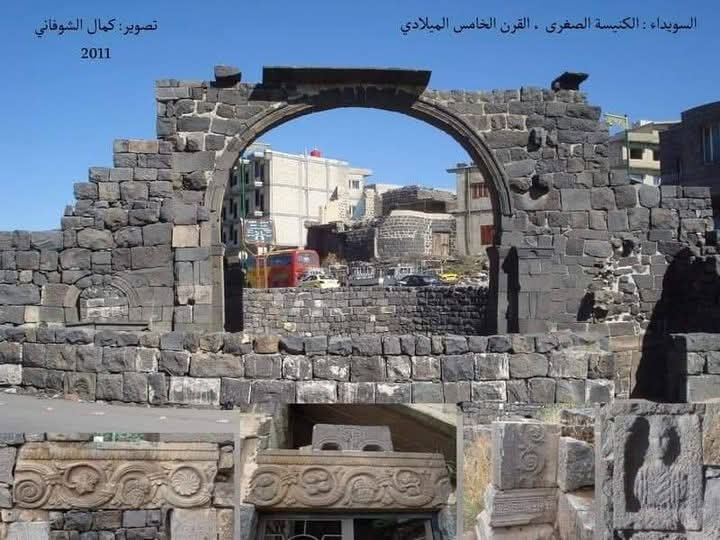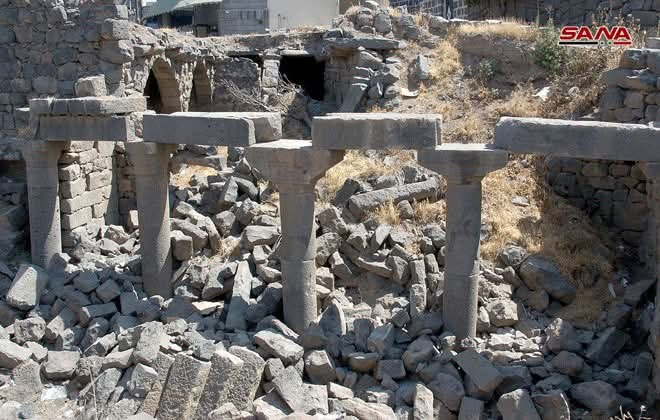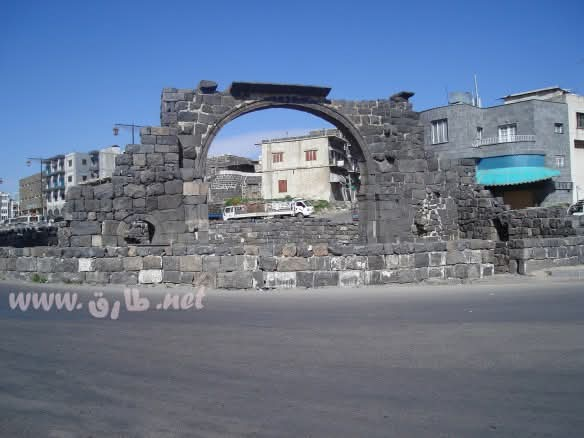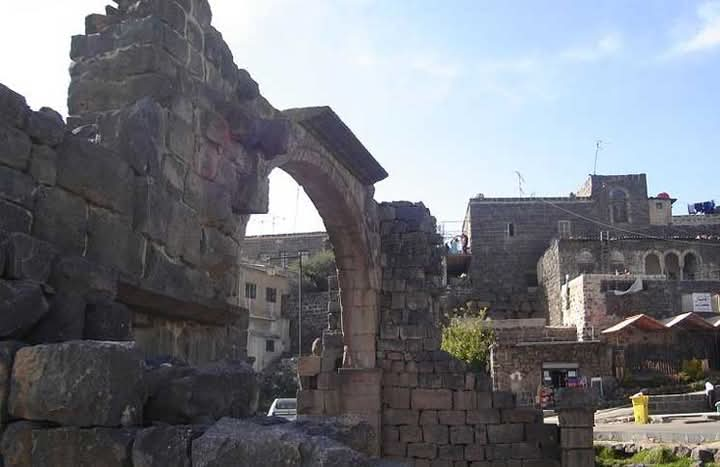In the ancient alleys of the Mashnaq neighborhood, one of the oldest districts in the city of Sweida, stands a traditional historic house that seems to guard the memory of the city and its way of life in the early nineteenth century. This house, constructed from black basalt stone with exceptional craftsmanship, reflects the characteristics of mountain architecture that distinguished the region, embodying the balance between humans and their environment, as well as the uniqueness of living in a conservative community deeply rooted in its history.
The house consists of a single floor, with its rooms surrounding an inner courtyard known as the hosh, which serves as the center of daily family life. In the middle lies an ancient water well, and along the edges, rooms with arches and thick wooden doors adorned with iron nails and traditional hinges are spread out. The house is topped with a vaulted roof designed to withstand the fluctuations of the mountainous climate, and it contains areas known locally as the matwa, the murabba, and the big house, which refer to bedrooms and living spaces used according to the seasons and needs.
Within this house, life pulsed to a different rhythm: the firewood crackling in the corner, the scent of stored wheat in the khawabi, and the noise of children playing in the courtyard—all these details create an intimate scene of mountain life. The house accommodated a large family and served as a place for receiving guests, reflecting the importance of social relationships and hospitality in the local community.
Despite the passage of time, this house remains steadfast, a testament to refined architectural taste and thoughtful simplicity that embodies both functional and aesthetic awareness. Today, as this style of houses dwindles in the modern city, there is an increasing need to preserve what remains as a living part of Sweida’s architectural and social memory.
Documenting the traditional house in the Mashnaq neighborhood is a revival of the voice of life that resided within its stones, and of the way of living that maintained the balance between humans, their land, identity, and community. It is a house unlike any other… a house that carries the spirit of the mountain in every corner.










